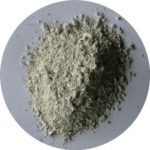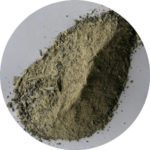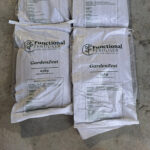Resilience is a word seen more frequently nowadays and our understanding is that it means the ability to stand up again after being flattened, both figuratively and literally, and our thoughts are with those in the Hawkes Bay, Gisborne, Northland and East Coast regions.
Rural communities are land based and the damage to land cannot be underestimated with the impact on individuals and communities unimaginable for those of us not directly involved.
Where we are able to assist is with the recovery of land. We subscribe to the philosophy that natural systems tend to wellness and left to time without intervention damaged land will recover, however there is much that can be done to speed the process.
Some of the steeper country is likely best planted in trees and possibly not grazed again, however it is under grazed permanent pasture that carbon is most rapidly sequestered and carbon in the form of organic matter is more valuable than gold as it is the essence of our survival.
As carbon is sequestered and organic matter built the potential for increased plant growth steadily grows.
The grazing of plants stimulates further growth. Dung and urine are deposited and along with uneaten leaf an organic cycle starts to operate, slowly at first but with sound management the speed of cycling steadily increases.
The other contributor to soil organic matter is old root. When a plant is grazed a process of root pruning takes place. The discarded root is digested primarily by earthworms, here in New Zealand it’s usually the humble but highly effective allolobophora caliginosa.
There were never naturally occurring grasslands producing anywhere close to the annual feed supplied by today’s high producing clover-based pastures. The pastures that provide much of the meat and milk necessary for our survival were developed by early settlers with a quantum step forward provided by the application of superphosphate after the second world war when DC 3 aircraft were used to spread it over recently cleared hill country.
Creating the environment that allowed clover and higher fertility grasses to flourish allowed astute and hard-working farmers to build stock numbers with a consequent increase in soil fertility.
Inevitably some steeper country that is prone to slipping and at best marginally economic will be retired and whether planted in harvestable trees, manuka, or a variety of other species is yet to be decided.
The silt that has been deposited in the bottom of the valleys will in time develop into highly productive soil capable of supporting animals and horticulture providing essential food for people.
Permanent clover-based pastures require, along with regular phosphorus and sulphur inputs, extra calcium as clover naturally contains 3 – 4 the calcium of grasses.
This is best provided by ag lime with one of the benefits often ignored being the subsequent increase in earthworm numbers along with the activity of a wide variety of beneficial fungi and bacteria.
Land damaged will recover more quickly when beneficial fungi and bacteria are introduced in much the same way as the human gut benefits from a probiotic after a course of antibiotic.
Functional Fertiliser developed two products, CalciZest and DoloZest, over twenty years ago that contain a wide range of beneficial fungi and bacteria.
They were formulated to speed the rate of nutrient cycling and improve physical soil structures. In order to ascertain their effectiveness they were initially incorporated into total nutrient programmes and the outcomes measured.
Over more than a decade of monthly pasture cuts a lift of 30% in annual pasture production without reliance on synthetic nitrogen was a common finding.
Because the slow growth winter period is the time during which all accumulated organic matter is fully digested providing nutrient for rapid spring growth, autumn is the optimum time to apply either product.
For more information call Peter on 0800 843 809.




